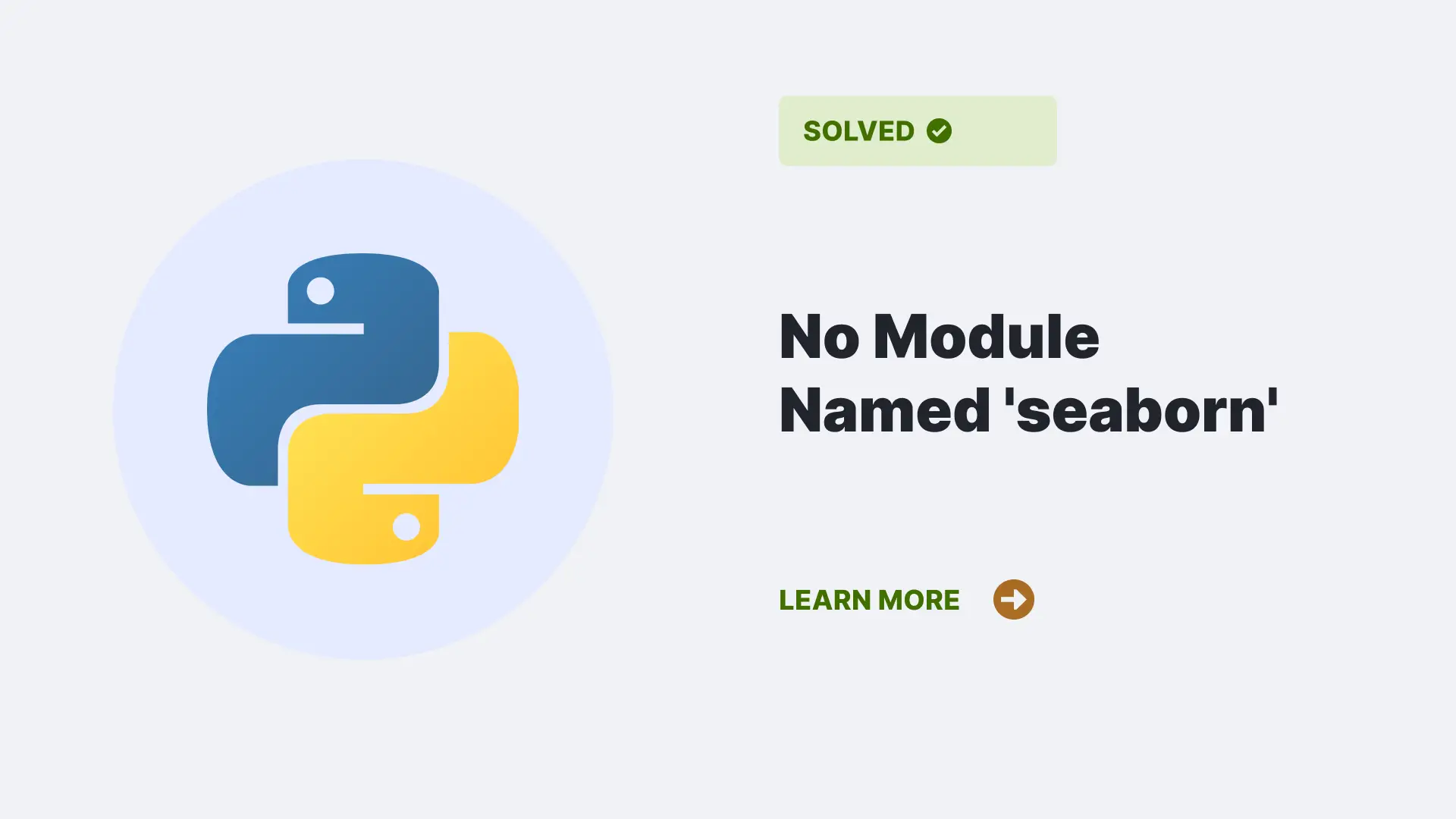The no module named ‘seaborn’ is a type of ModuleNotFoundError that mainly focuses on the Seaborn module. Seaborn is a popular Python library for data visualization and statistical analysis. The Seaborn in Python provides a high-level interface for creating attractive and informative plots from various data types. However, sometimes when you try to import seaborn in your Python code, you may encounter an error that says “no module named ‘seaborn’.” This error means that Python cannot find the seaborn module in your system and, therefore, cannot use it in your code. The article below will explain what causes this error and how to resolve it.
Contents
What is the “no module named ‘seaborn’” error?
The “no module named ‘seaborn’” error is a common ImportError that occurs when you try to import seaborn in your Python code without having it installed in your system. For example, if you run the following code:
import seaborn as snsYou may get an output suggesting the ModuleNotFoundError: No module named ‘seaborn’.
This output tells you that Python cannot find the seaborn module in your system and, therefore cannot import it in your code. This error prevents you from using any of your code’s seaborn functions or methods.
What causes the “no module named ‘seaborn’” error?
The main cause of the “no module named ‘seaborn’” error is that you have not installed seaborn in your system. Seaborn is not a built-in Python module, meaning you need to install it separately before you can use it in your code. Several ways to install Seaborn in your system include using pip, conda, or downloading the source code from GitHub. However, if you have not installed Seaborn using any of these methods, then Python will not be able to find it in your system and will raise the ImportError.
Another possible cause of the “no module named ‘seaborn’” error is that you have installed seaborn in a different environment than the one you use to run your code. For example, suppose you have installed seaborn in a virtual or conda environment, but you are running your code in the base environment or a different environment. In that case, Python will be unable to find seaborn in that environment and will raise the ImportError. To avoid this issue, you need to make sure that you activate the same environment where you have installed Seaborn before running your code.
How to resolve the “no module named ‘seaborn’” error?
To resolve this error you can use any of the following methods mentioned below:
Installing seaborn
The easiest way to resolve the “no module named ‘seaborn’” error is to install seaborn in your system using pip or conda. Pip and Conda are two popular package managers for Python that allow you to install and manage various Python modules and packages. To install Seaborn using pip, you can run the following command in your terminal:
pip install seabornTo install Seaborn using conda, you can run the following command in your terminal:
conda install seabornThese commands will download and install the latest version of Seaborn and its dependencies in your system. After installing Seaborn, you can verify that if the seaborn is installed correctly by running the following code:`
To install Seaborn in Jupyter Notebook the steps are the same as above. You need to run the following code:
!pip install seaborn
To check if the Seaborn has been installed properly or not you can run the following code:
import seaborn as sns
print(sns.__version__)This code will import seaborn and print its version number. If you do not get any errors and see a valid version number, Seaborn is installed correctly and ready to use.
Changing the Environment
However, suppose you still get the “no module named ‘seaborn’” error after installing seaborn using pip or conda. In that case, it may be because you are running your code in a different environment than the one where you have installed seaborn. To fix this issue, you must activate the same environment where you installed Seaborn before running your code. For example, if you have installed Seaborn in a virtual environment called “myenv”, then you need to activate it by running the following command in your terminal:
source activate myenvOr if you are using Windows, then run:
activate myenvThe above command will help activating the virtual environment called “myenv” and allow you to use any modules or packages installed in that environment. After activating the environment, you can run your code and import Seaborn without errors.
FAQs
How do I know which environment I am using to run my code?

You can check which environment you are using to run your code by printing the value of sys.executable or sys.prefix in your code. For example, if you run the following code:
This output tells you you are using the Python executable and the environment in the “/home/user/myenv” directory. You can compare this output with the location where you have installed Seaborn and see if they match. If they do not match, you need to activate the same environment where you installed Seaborn before running your code.
How do I update Seaborn to the latest version?

You can update Seaborn to the latest version using the –upgrade option with pip or conda. For example, to update Seaborn using pip, you need to run the following command:
How to verify the updated seaborn?

These commands will download and install the latest version of Seaborn and its dependencies in your system. After updating Seaborn, you can verify that it is updated correctly by running the following code:
This code will import seaborn and print its version number. If you see a newer version number than before, then it means that Seaborn is updated correctly and ready to use.
Conclusion
In this article, we have learned the “no module named ‘seaborn’” error, what causes it, and how to resolve it. We have also answered some frequently asked questions about this error. We hope this article has helped you understand and fix this error and use Seaborn for your data visualization and statistical analysis tasks.
Reference
Follow PythonClear to learn more about Python errors and modules.

